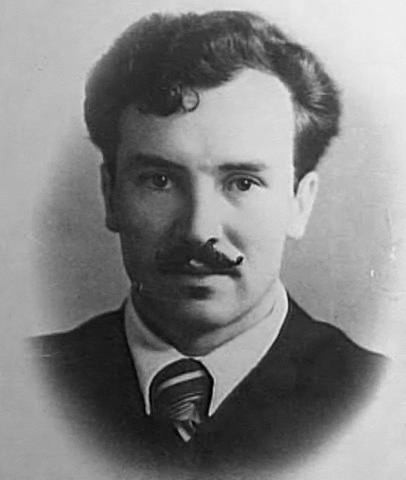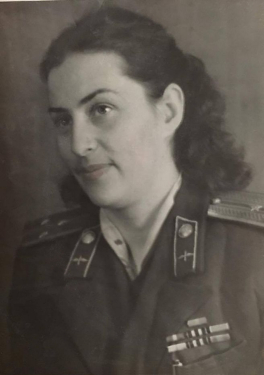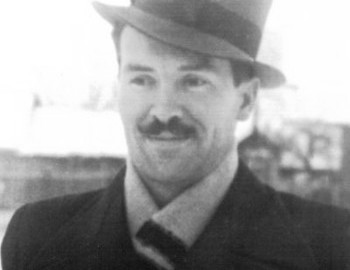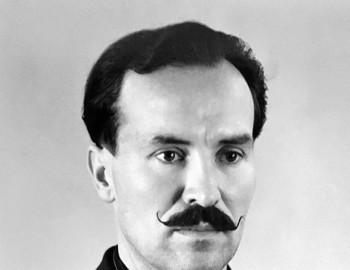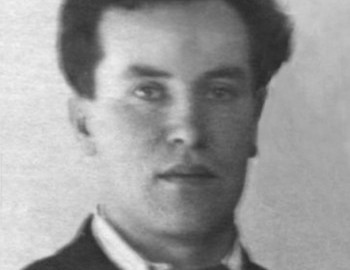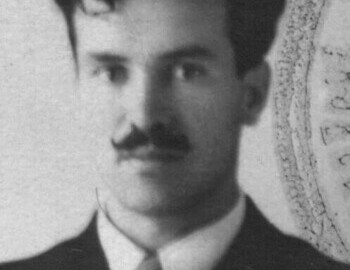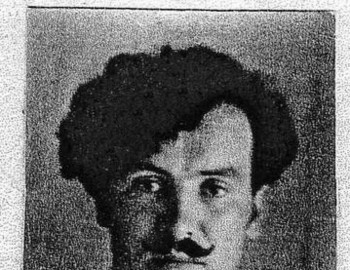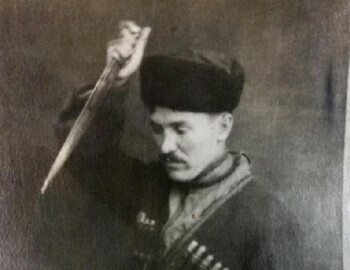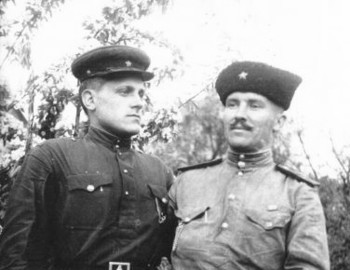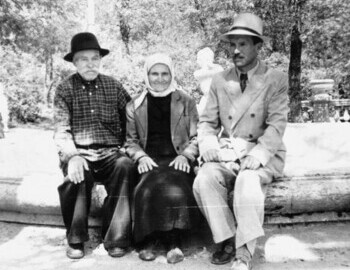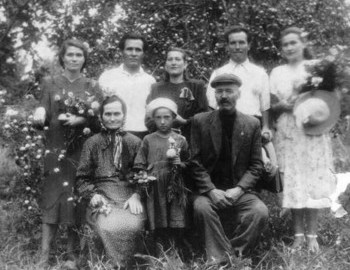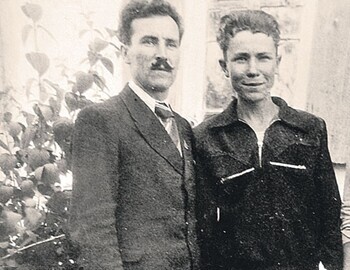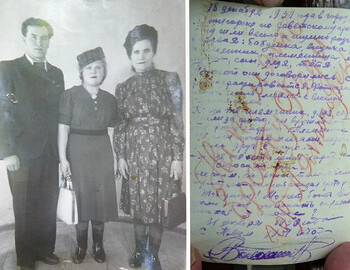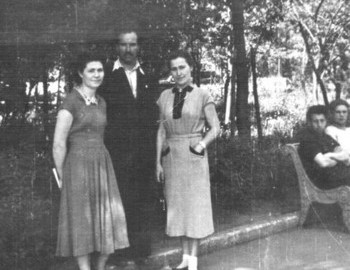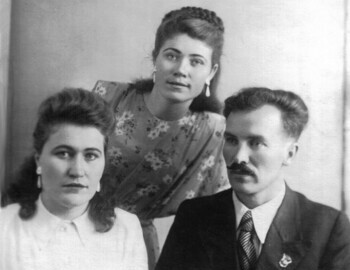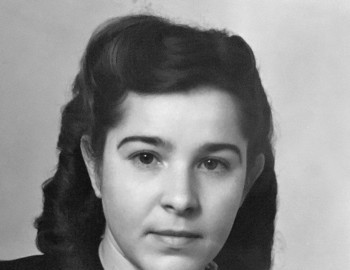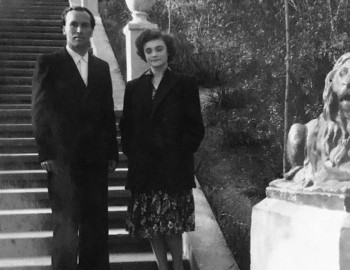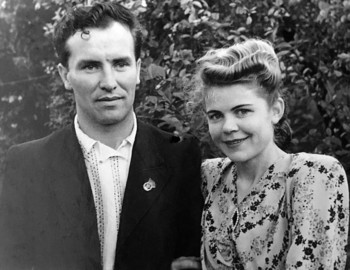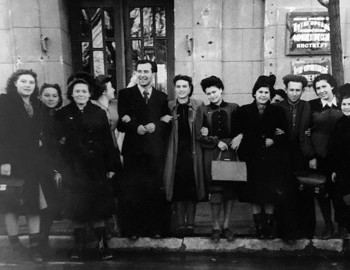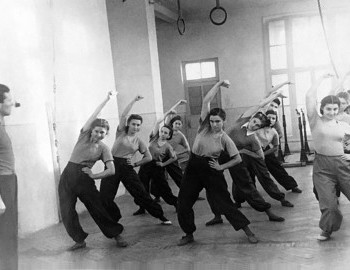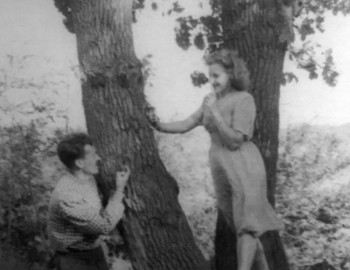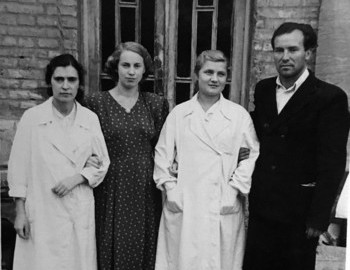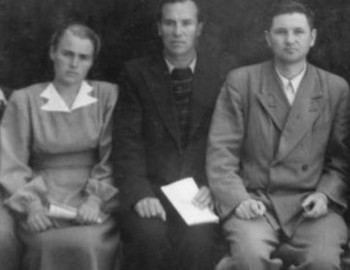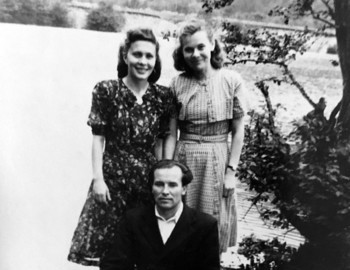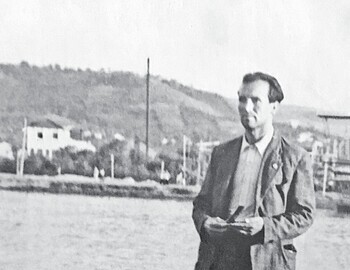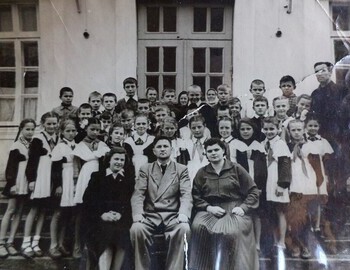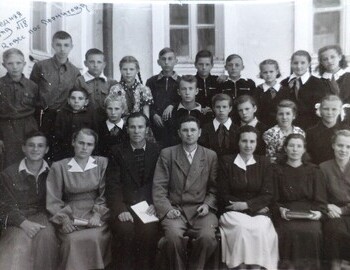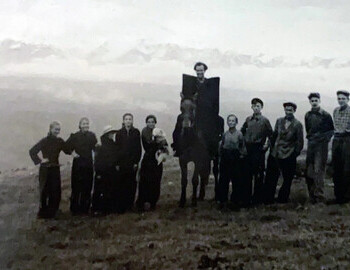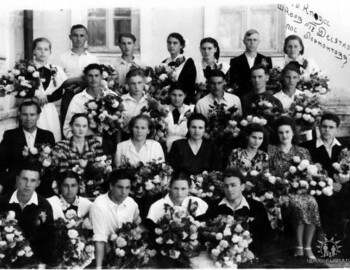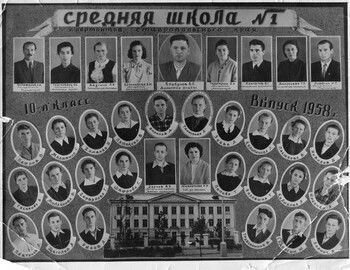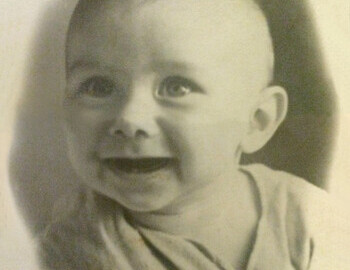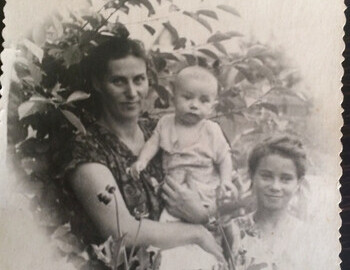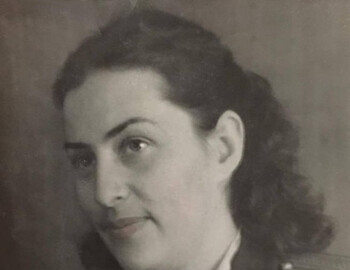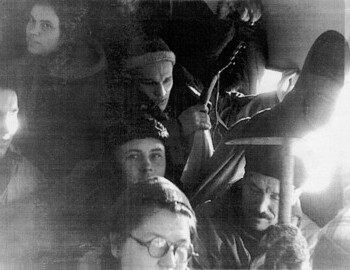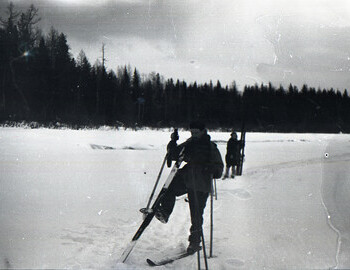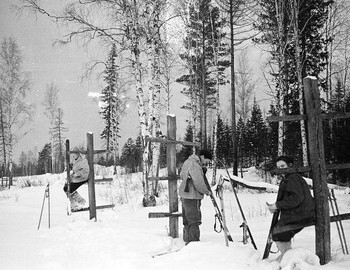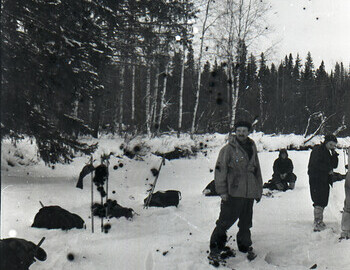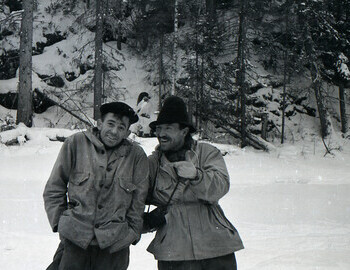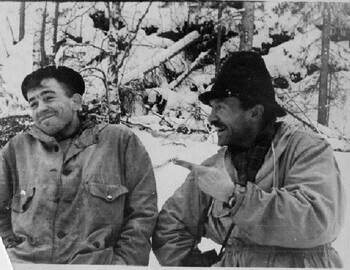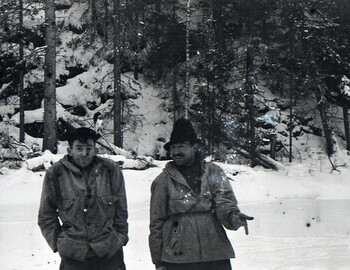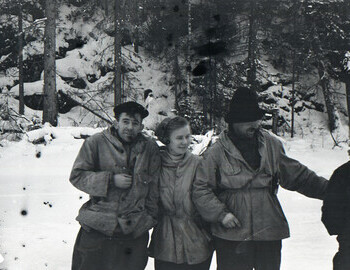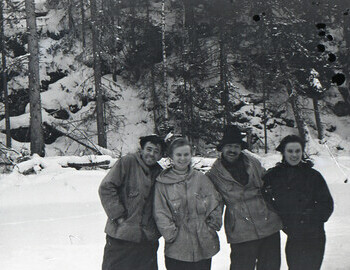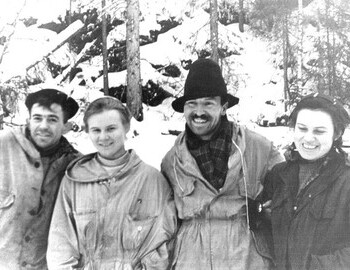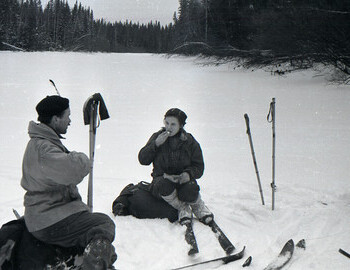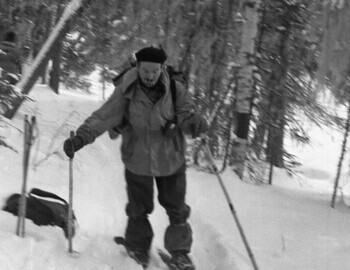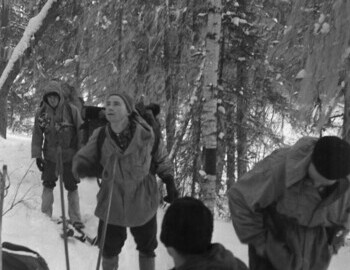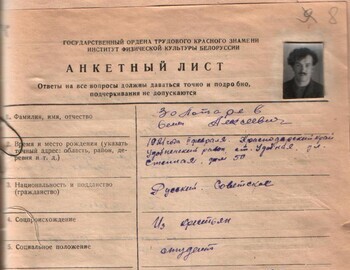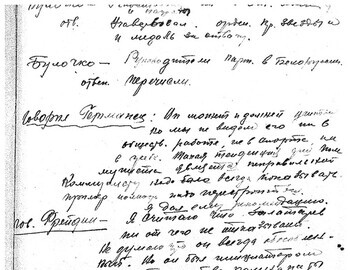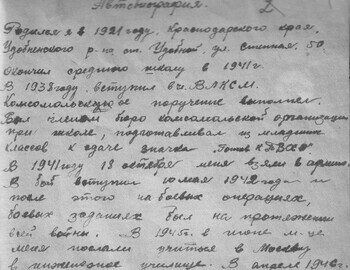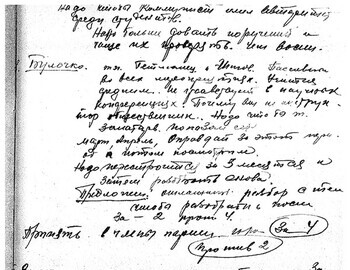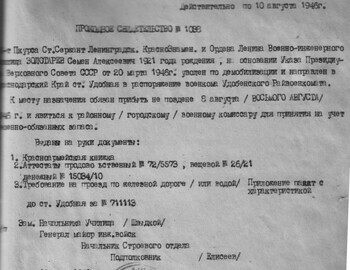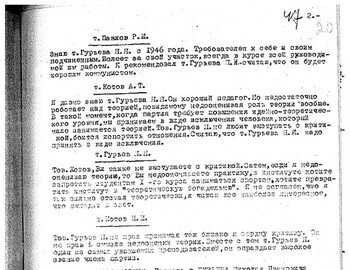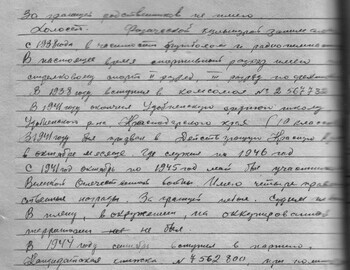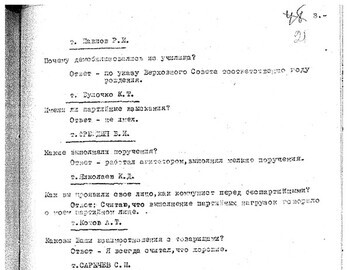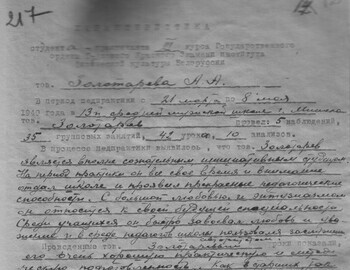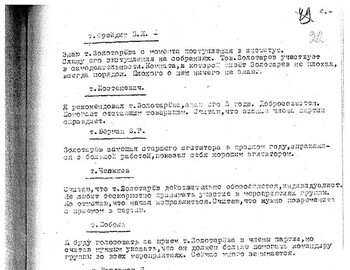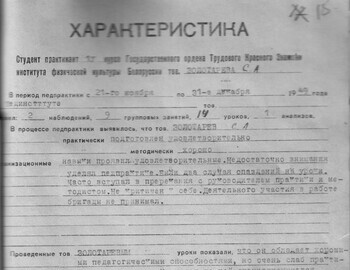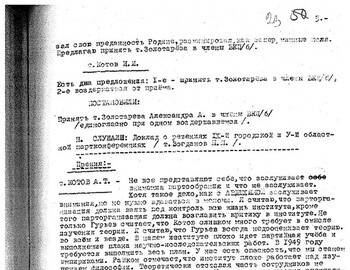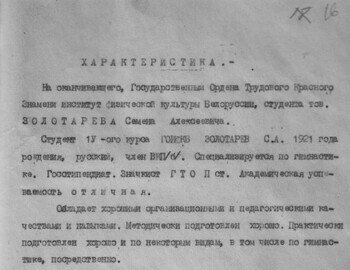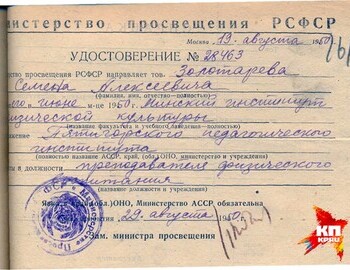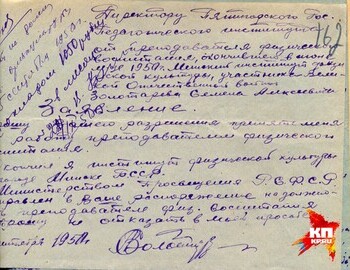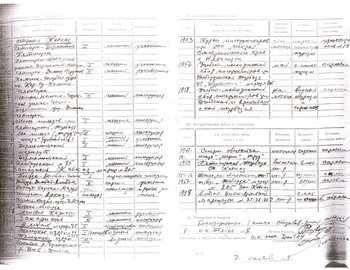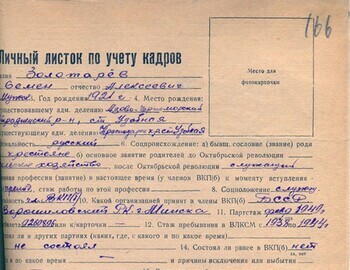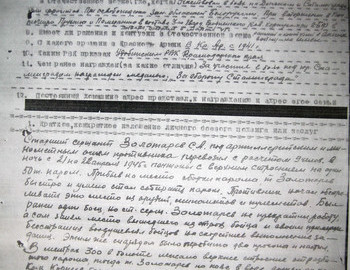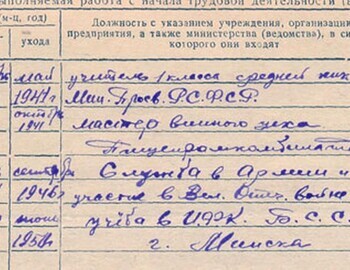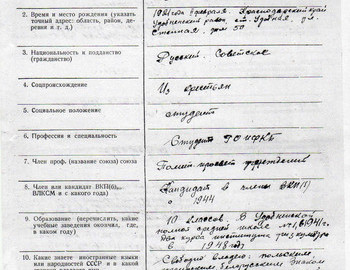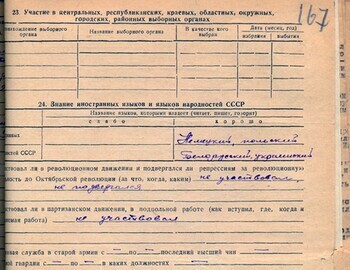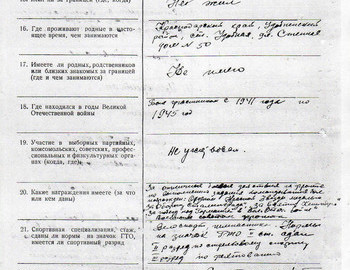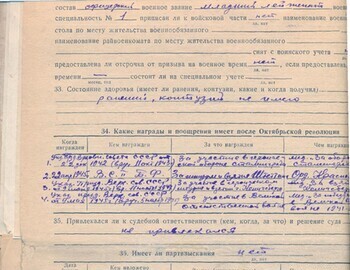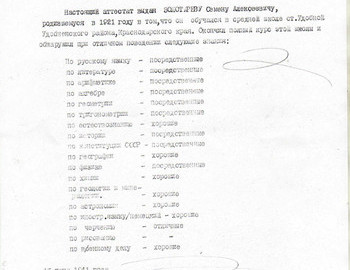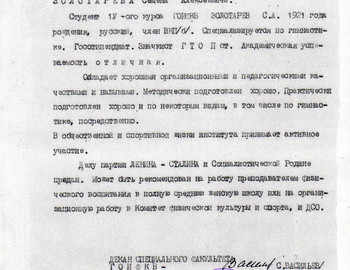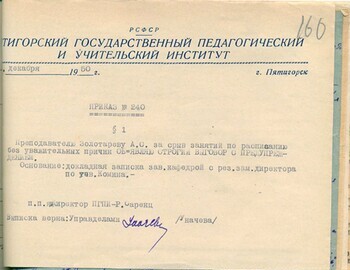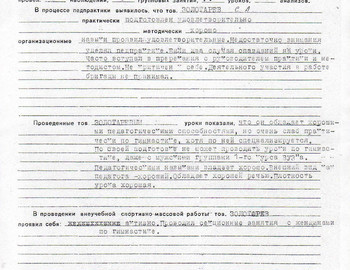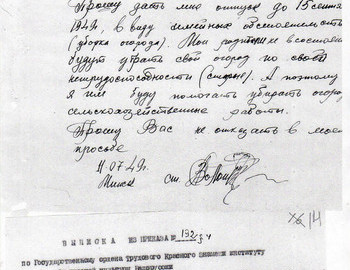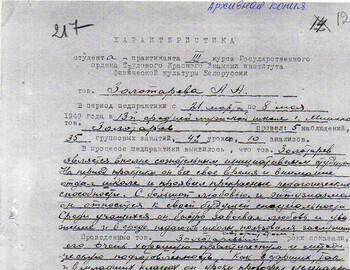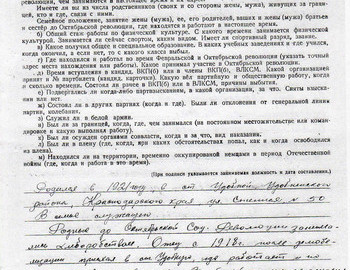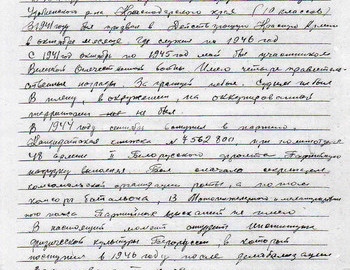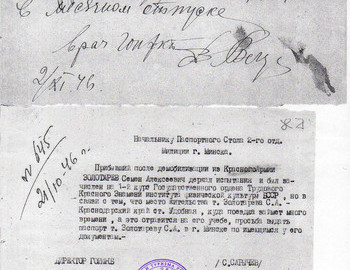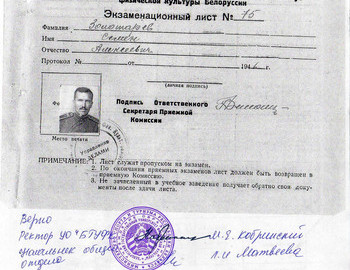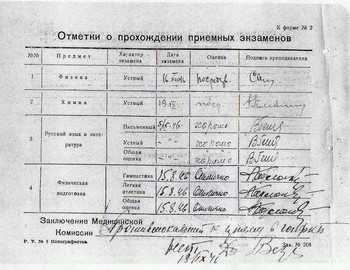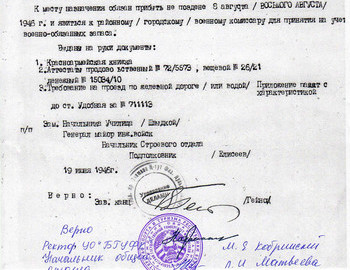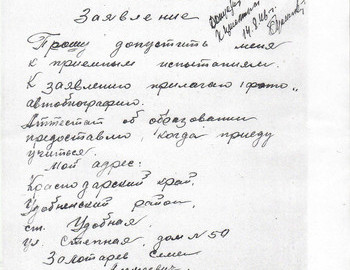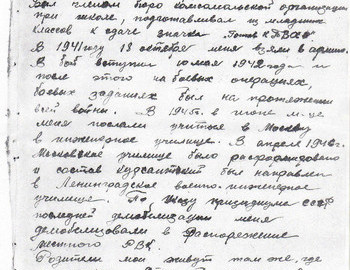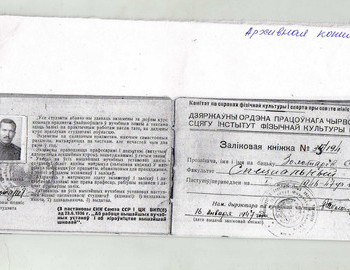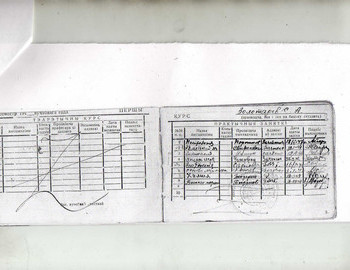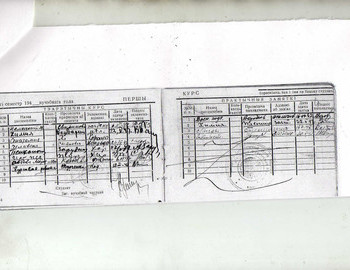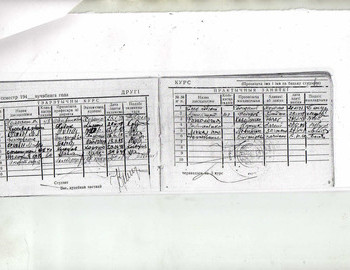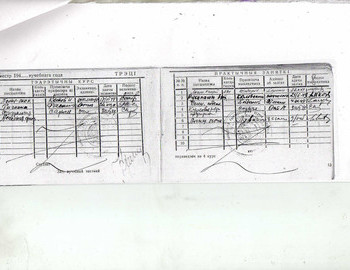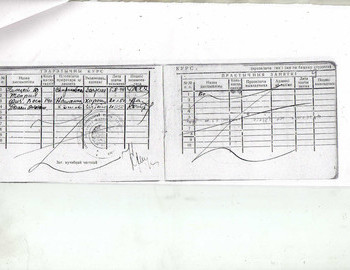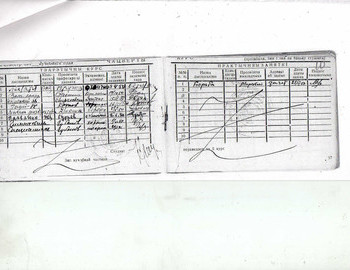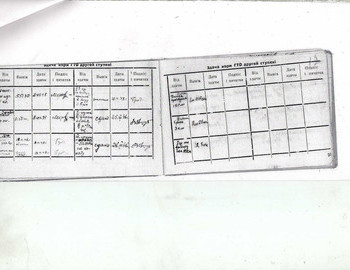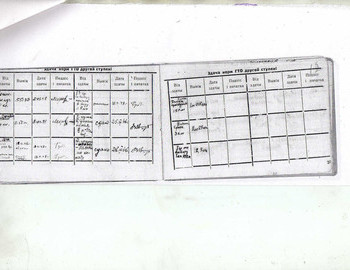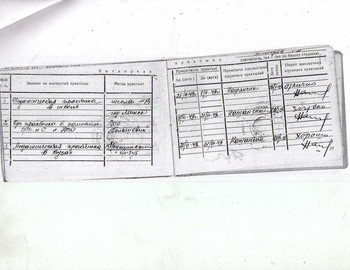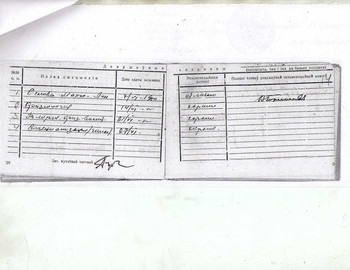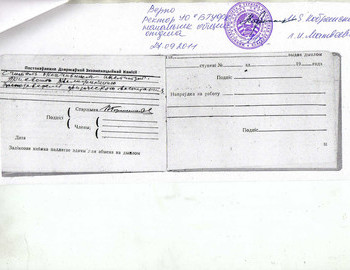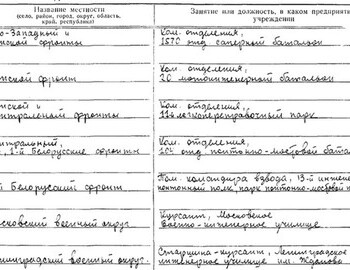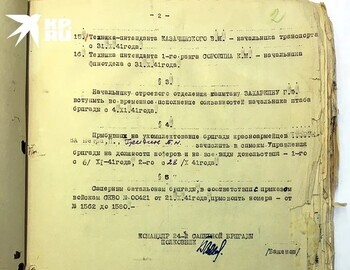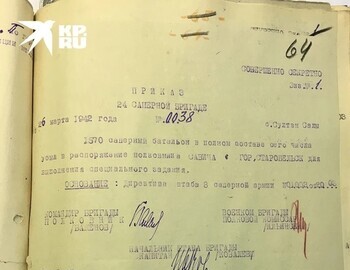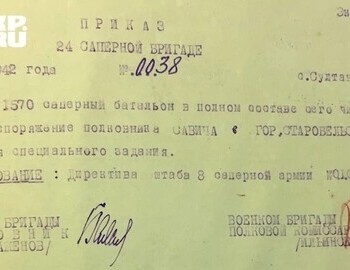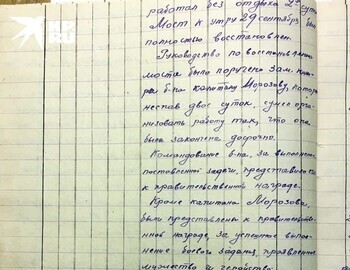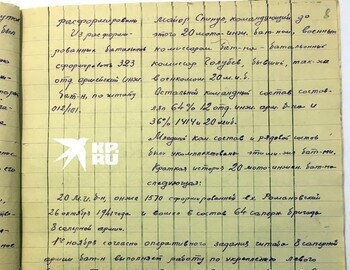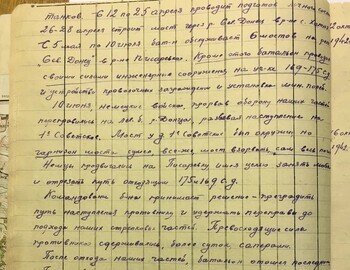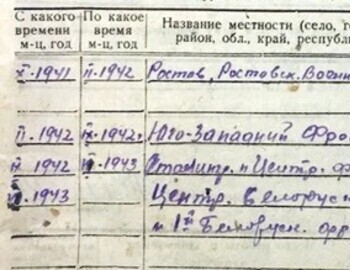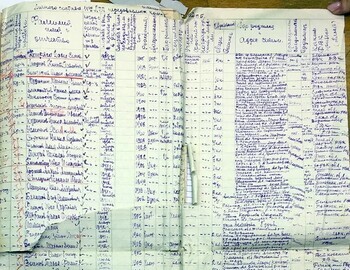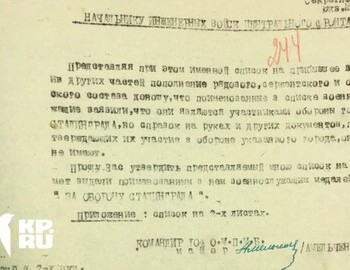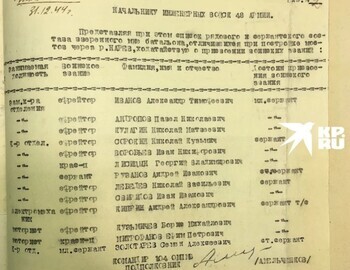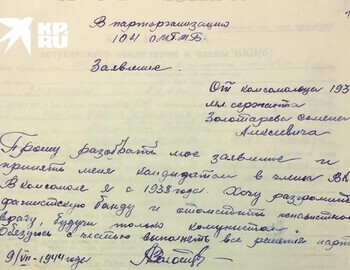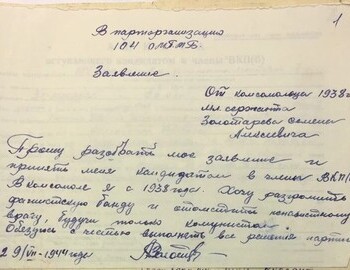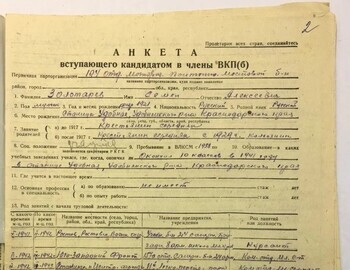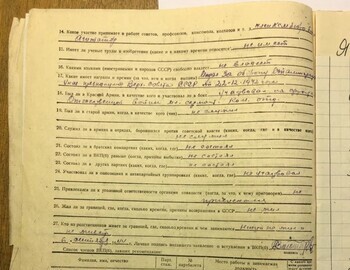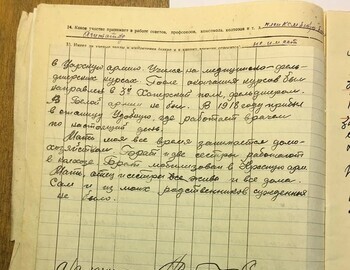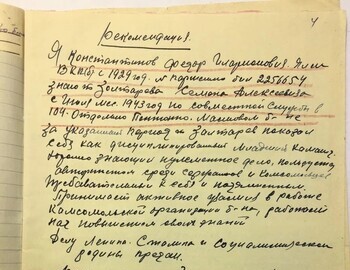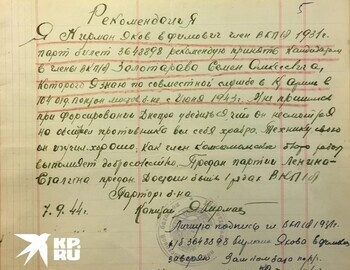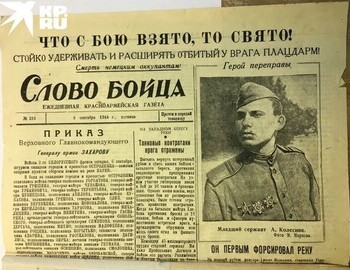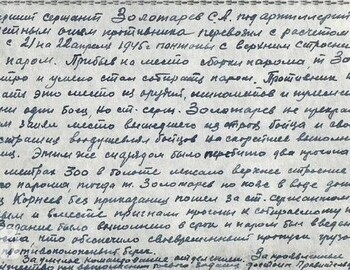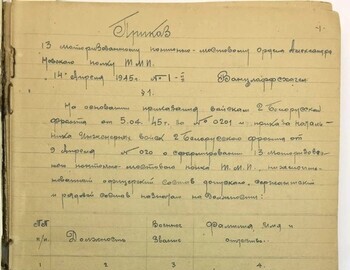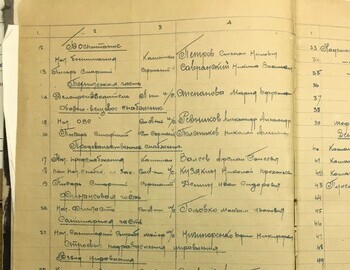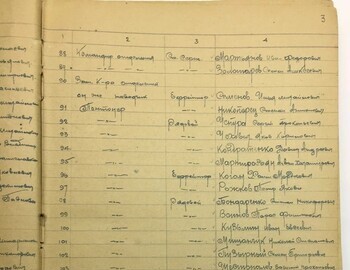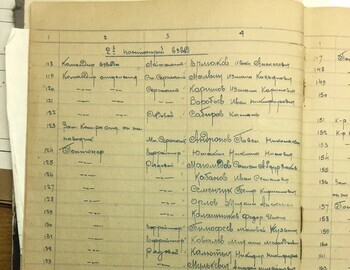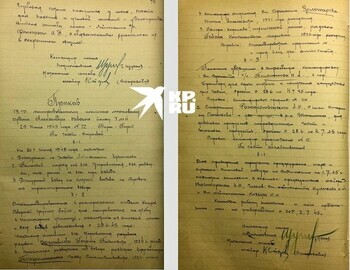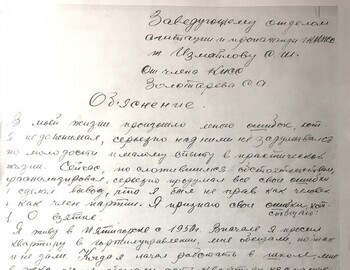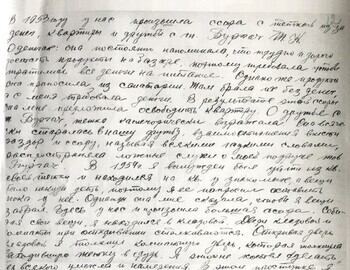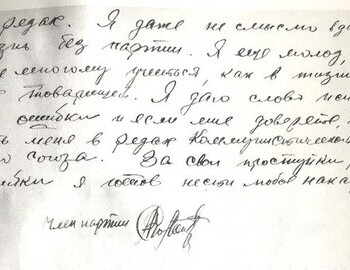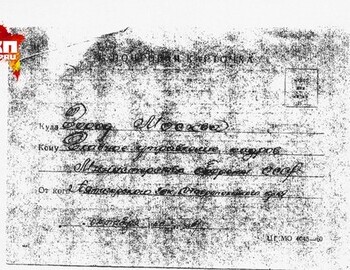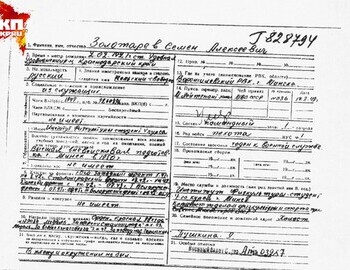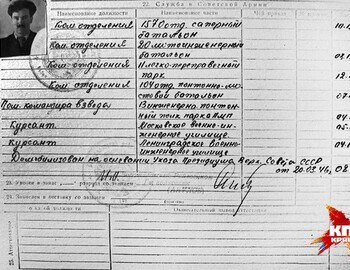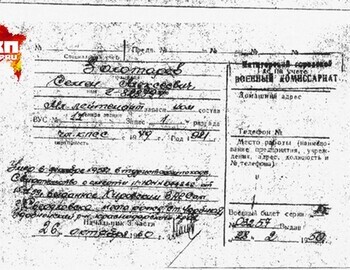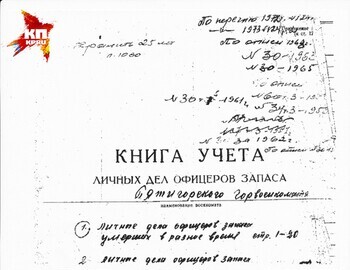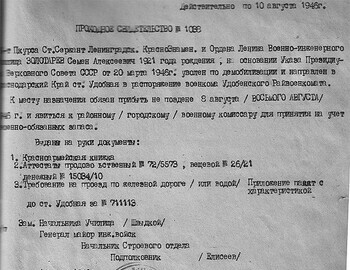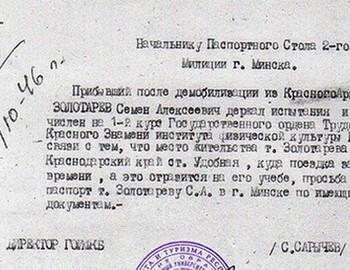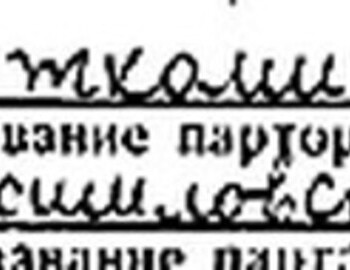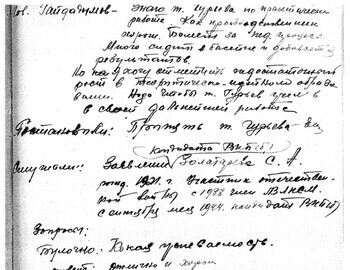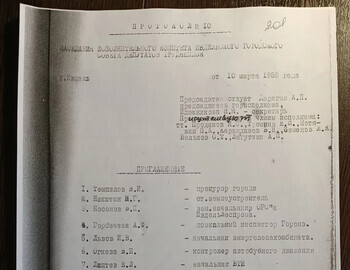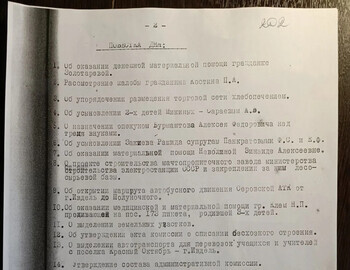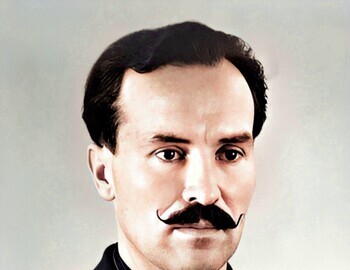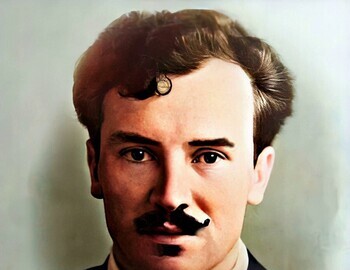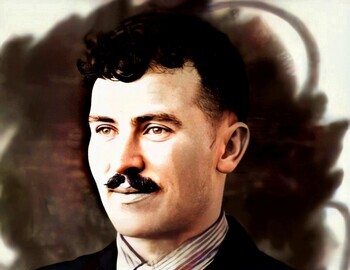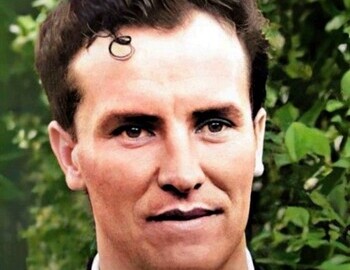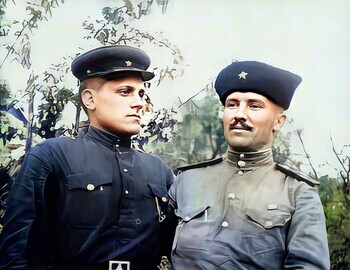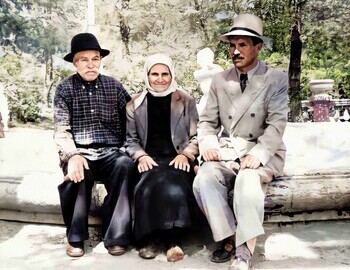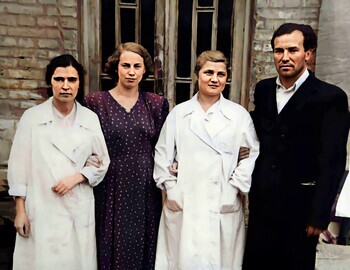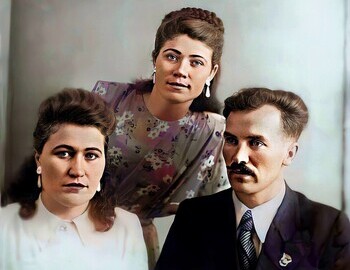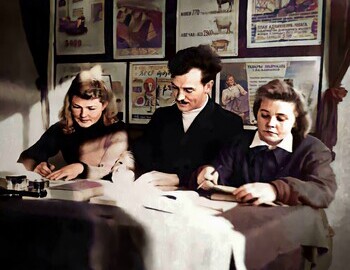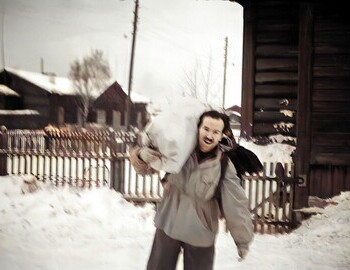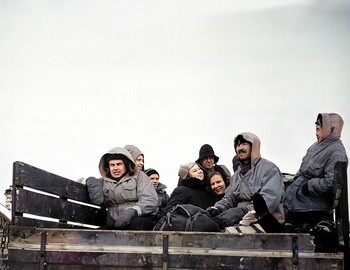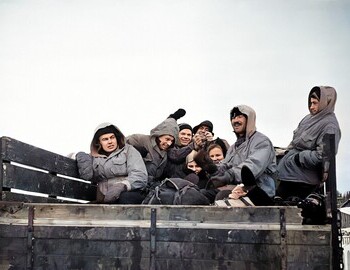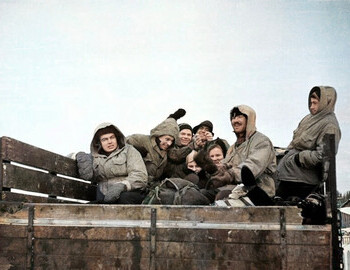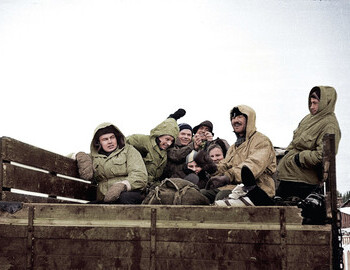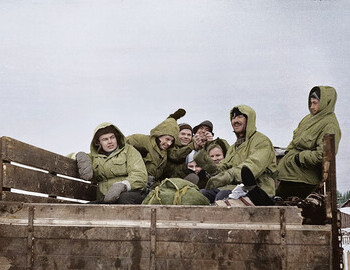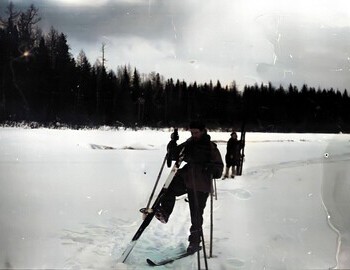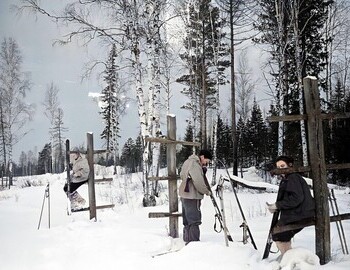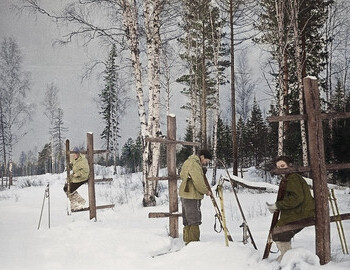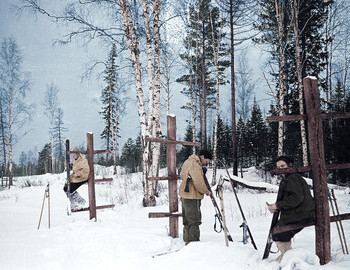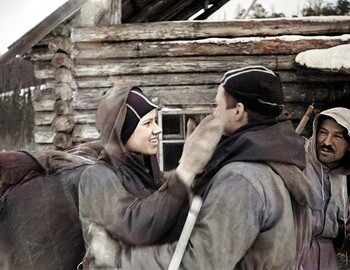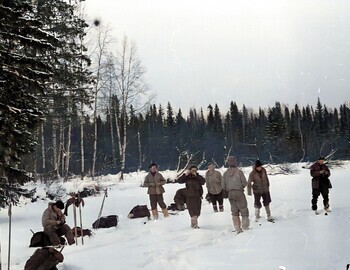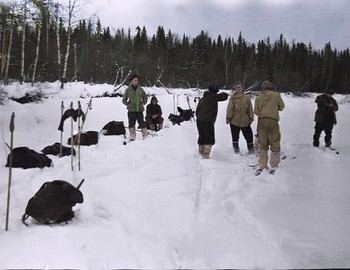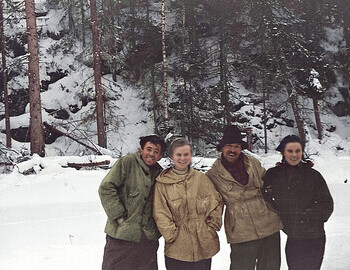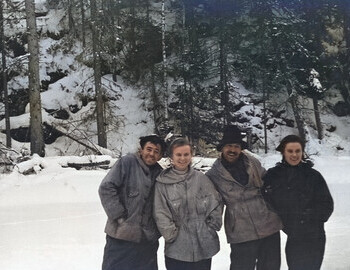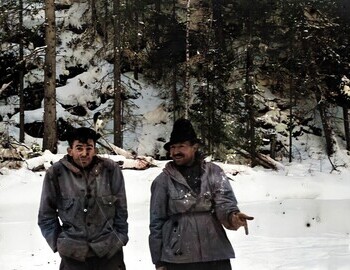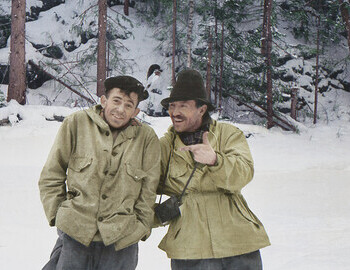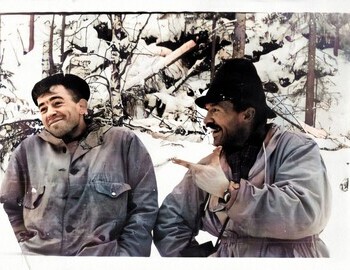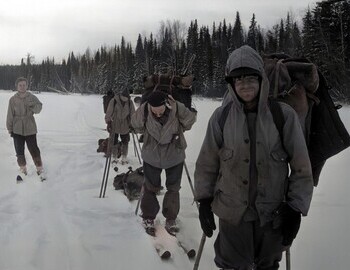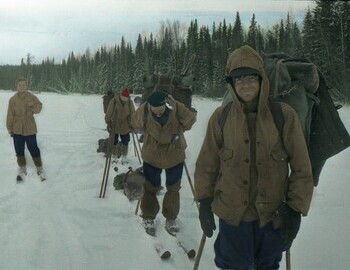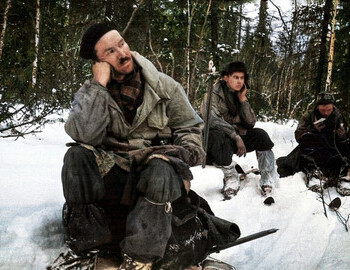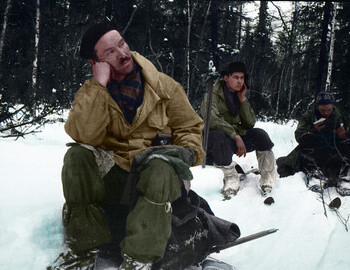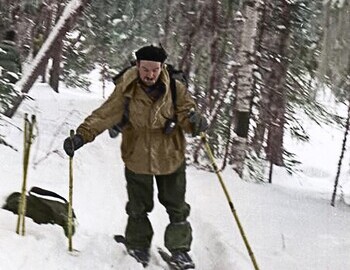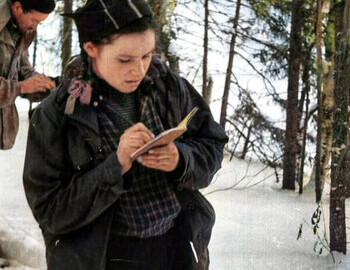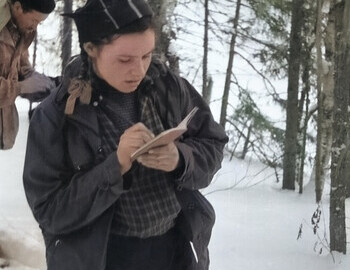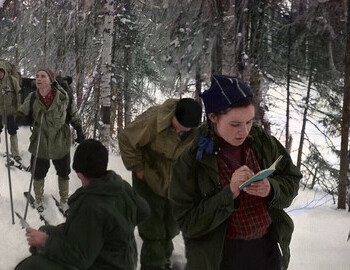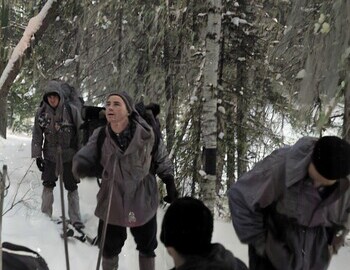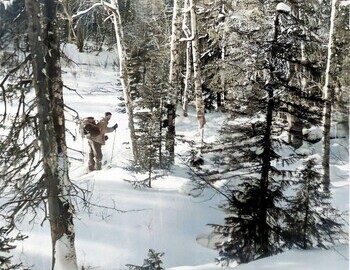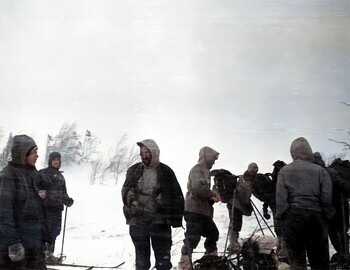
Semyon Alekseevich Zolotaryov (Sasha)
Tried for bribery and traitor brother
Could Zolotaryov be a saboteur?
Money paid to Zolotaryov's mother
Case files vol 2: 52, 53, 54, 60, 64, 68, 69
Andrey Leshchenko, great-nephew, letter
Born on * February 2, 1921, USSR.
* This is the date Zolotaryov writes in all his documents, but the registry in his place of birth, the village of Udobnaya, shows March 1, 1921. Then again this might not be such a mystery since the place is remote and if for purpose of registration of a birth one had go to a bigger village they might put down whatever is the next date in the registry. It's a thought. Another discrepancy, maybe unrelated, is that Vozrozhdenniy wrote in the autopsy report the age of Zolotaryov to be 37 when the correct one should be 38 if he was born on Feb 2, 1921.
Graduated from the Institute of Physical Education in Minsk in 1950. Semyon was an instructor Kourovka tourbase at the time of his death. He was the oldest and also the most mysterious member of the group. He asked to be called Sasha and that's the name that appears in many documents and memoirs. In fact, his given name is Semyon. He was born in the North Caucasus (from the Kuban Cossacks, from the village of Udobnoy on the border with the Karachay-Cherkess Autonomous Soviet Socialist Republic), where he regularly went to his mothers. Born in the family of a paramedic, he belonged to the generation most affected by the Great Patriotic War. The draft of 1921-22 had only about 3% survival rate. Semyon went through the entire war in the Armed Forces from October 1941 to May 1946. He became a candidate member of the CPSU (b) in 1944, was a Komsomol functionary of a battalion, joined the party after the war. Had 4 military awards. Semyon Zolotaryov's military past has a special role in the events of the tragic night. After the war, Semyon tried to continue his military career - in June 1945 he entered the Moscow Military Engineering School, which, however, almost immediately underwent a reduction. In April 1946, Zolotaryov transferred to the Leningrad Military Engineering School as part of the course, but apparently it was not meant for him to serve in the army, as this school was cut down as well. In the end, Semyon Zolotaryov found himself at the Minsk Institute of Physical Education (GIFKB), which he successfully graduated in 1951. In the mid-50's he worked as a sports instructor at the tour base "Artybash" (Altai), then moved to the Sverdlovsk region, where he got a job as a senior tourism instructor at the Kourovska tourbase.
However, before the very hike to Otorten, along with the group of Igor Dyatlov, Zolotaryov left Kourovska. He was single, which looked rather unusual for that time, had tattoos and gold capped teeth. Zolotaryov's tattoos are very interesting, among them there were images of a five-pointed star, strange shape like beets-heart-fire (in the case files says beets), the name "Гена" (Guena), his year of birth "1921", ДАЕРММУАЗУАЯ (DAERMMUZAUAYA), "Г+С+П=Д", this was common among Soviet soldiers who served together for a long time. Russian letter "Д" stands for "дружба" (friendship). The three letters were first letters of the three soldiers. "С" stood for "Семен", Semyon in Russian. Others two names are unknown. Then we have "Г + С", as well as individual letters "C" next to the star and beets-heart-fire. Most of Zolotaryov's tattoos were hidden by clothing and the rest of the Dyatlov group members didn't know anything about them.
He died on his 38th birthday. Zolotaryov is buried on May 12*, 1959, in Ivanovskoe cemetery, Yekaterinburg, Sverdlovsk Oblast, Russia.
* There is no record or recollection of contemporaries about the exact date when Zolotaryov's funeral was, only that he was buried in Ivanovskoe cemetery in Sverdlovsk. There was a grave and wreath but no record in the cemetery's registry. For this reason, and because the family i.e. his mother were lied about the cause of death, journalist Natalya Varsegova (Komsomolskaya Pravda)was able to exhume the body of Semyon Zolotaryov at Ivanovskoe Cemetery in Yekaterinburg on April 12, 2018, for the purpose of identification. Continue reading →
| Semyon Zolotaryov camera | |
 | "Komsomolskaya Pravda" articles |
| 25 Mar 2023 | "Found another mystery in the death of tourists in the Northern Urals" |
| «Найдена еще одна загадка в деле гибели туристов на Северном Урале» | |
| 28 Jul 2021 | "New documents in Semyon Zolotaryov dossier" |
| «О чем говорят новые документы в деле Семена Золотарева» | |
| 3 Nov 2020 | "What was the oldest member of the Dyatlov group hiding" |
| «Что скрывал самый старший участник группы Игоря Дятлова» | |
| 22 Oct 2020 | "Could Zolotaryov be a saboteur?" |
| «Мог ли самый загадочный участник трагического похода быть диверсантом» | |
| 22 Sep 2020 | "Tried for bribery and traitor brother" |
| «Судили за взятку и предательство брата» | |
| 16 Jul 2018 | "Results of a repeated DNA testing of the remains of the alleged Semyon Zolotarev" |
| «Результаты повторного ДНК-исследования останков предполагаемого Семена Золотарева» | |
| 17 May 2018 | "DNA expertise denies the relationship of the alleged Semyon Zolotaryov with his niece" |
| «ДНК-экспертиза отрицает родство предполагаемого Семена Золотарева с его племянницей» | |
| 26 Apr 2018 | "It was a very powerful blow" |
| «Это был удар большой силы» | |
| 13 Apr 2018 | "Who is buried in the Zolotaryov's grave?" |
| «Кто похоронен в могиле Золотарева?» | |
| 24 Aug 2016 | "Why was Semyon Zolotaryov severely reprimanded" |
| «За что Семен Золотарев получил строгий выговор?» | |
| 13 Aug 2015 | "Why was Semyon Zolotaryov not welcome in the the party" |
| «Почему Семена Золотарева не хотели принимать в партию» | |
| 04 Jun 2015 | "Mysterious biography of Semyon Zolotaryov" |
| «Загадочная биография Семена Золотарева» | |
| 16 Feb 2015 | "Mysterious man from the North Caucasus" |
| «Загадочный парень с Северного Кавказа» | |
| 21 Apr 2014 | "Someone buried the most mysterious hiker in the most prestigious cemetery" |
| «Самого загадочного туриста кто-то похоронил на самом престижном кладбище» | |
On April 12, 2018 Komsomolskaya Pravda, per request of the relatives, exhumed the body of Semyon Zolotaryov at Ivanovskoe Cemetery in Yekaterinburg for the purpose of identification. The superimposition performed by expert Sergey Nikitin at the cemetery comparing the skull with a known post war photograph of Semyon Zolotaryov shows perfect match (more information).
The first DNA test results aired by Russian Channel 1 on May 16, 2018 exclude kinship of the person laying in Zolotaryov’s grave with Zolotaryov’s niece Tatyana Skulbeda, daughter of Semyon’s sister (more information).
Second DNA test, this time conducted by such an authoritative scholar as Pavel Ivanov, showed that the DNA of the person buried under the sign "Semyon Zolotaryov" matches the DNA of his niece. But this fact does not exclude the version of researchers who suspect that under the name of Semyon could be buried his brother Nikoaly. According to archival documents Nikolay Zolotaryov worked with the Germans and disappeared without a trace during the war. Therefore, we can not yet put an end on this investigation (more information).
Komsomolskaya pravda journalist Natalya Varsegova said that there is going to be a third DNA testing in 2020 that will hopefully be definitive.
Sasha - the baby that always broke his mother into tears
by Galina Sazonova
This article is the result Galina Sazonova's exhaustive detective work. until it was not known that a child had survived any of the victims. narrative starts as matter fact expose but author shows soon enough her sentiment to characters involved and reveals true feelings on topic. At moment she is maybe person who knows best semyon background. Galina sazonova deeply emotionally bound to keep going.
Semyon's son Sasha is born on February 10, 1956, in Lermontovo, Russian Federation. Semyon's common law wife's name is Tamara.
This is a photo of Tamara, baby Sasha and one of her daughters.
Tamara has four daughters. The eldest was born before Sasha, and three after. Sasha would be the fifth child. All the daughters were born out of wedlock and had the mother's surname. With that, she had a second civil husband after Semyon, and they lived happily with him all his life, and all her children are very fond of him. Tamara was very worried about Sasha her whole life. She always began to cry from mentioning his name. It was Her tragedy. Her daughters always knew that there was a brother, this was not hidden from them, but the topic was not discussed in the family because there was a very painful reaction from her.
You can't start to imagine how intelligent, educated, tactful, and successful her daughters are. They speak of their mother with a lot of love and compassion, admitting the fact that Sasha was given away and not understanding how this could happen. This is not an antisocial family, and this is not the woman who is just so ready to give up her child. She did everything she could to raise beautiful daughters.
Tamara and her second husband were looking for Sasha. The eldest daughter remembers the moment when all in tears, Tamara carried Sasha. He was about a year old. She put him on the porch of a house and hid the girl in bushes so that she would be on the lookout Sasha not to fall from the porch or crawl away. The door opened, Sasha was taken. It was a private house. The daughter is sure that it was Semyon's house and that Semyon's mother opened the door. Before this happened, Tamara and Semyon quarreled, and he left.
The daughter didn't like Semyon, although she remembers him well. She doesn't remember any tattoos. He was strict with her, but at the same time, she doesn't mention any violence towards her (raising a hand or verbal abuse). But she remembers very well how he forced her to eat all her food. This was very typical after the war. I couldn't stand my grandma because my sister and I could not leave the table until we finished it all, including crumbs of bread, which fell on the table. My grandmother survived the siege of Leningrad from the first to the last day. Only later did I understand why she did what she did. Semyon, aged 11, survived the Holodomor and the famine of 1945-46.
Tamara loved Semyon very much. At the same time, she hated him her whole life.
Tamara also fought during the war.
This is what is known from Tamara's daughters. It is clear that all memories can be smoothed, especially childhood memories. Even more the daughters will protect their mother because they love her.
Now looking at it objectively hear is what I do not understand. Everything happened in a very small village of Lermontovo, also closed to outsiders, since uranium was extracted on its territory. All those who came to work in this city were investigated. The village was recently founded, and everyone lived in barracks. Those in one longhouse have many rooms and one family (no matter how many people) lives in one room. All have a shared toilet, a corridor, a kitchen. There are many neighbors. I don't understand how it is possible to explain to the neighbors where did the child go. Neighbors could not help but notice. The same goes for the Semyon's family, how could the child disappear without anybody noticing, they lived in barracks too.
At that time in the Soviet Union, the children were looked at very fondly (they were a great asset), especially in the territories that were occupied by the Germans. You might not know, but in the village of Udobnoy, where Semyon is from, there was a German hospital for which children were selected, their blood was pumped out, and their bodies were thrown into a pit behind the hospital. After liberation, they found in the ground bodies of women, with bullet holes in their heads, embracing their children. A child at that time was considered sacred.
One would wonder why is Semyon in the photos surrounded by women. Because there were no men (muzhiks). Twenty-five million men of childbearing age perished. There was an extreme demographic bias. Women did not hope to get married, but they wanted to have children at least.
Therefore, at that time, there was a government decree, on the support of single mothers financially. Perhaps this is the reason why none of Tamara's daughters had an official father and why Semyon was not put on the birth certificate. Tamara received money for this under a program that stimulates fertility. They all lived very poorly. It is now difficult for us to imagine how difficult it was back then to make ends meet.
Considerations to understand the time and place:
- The rejection of the child threatened Tamara to be condemned by society. A strong condemnation could end up with dismissal from work. That didn't happen. She had to have a "storefront" story for neighbors and colleagues.
- The legal moment. Not only that she gave up the child, but she had to make out a number of legal documents - to write him out from the place of living, from the kindergarten, from the children's polyclinic, and so on. Everywhere she to give some reason, why is she doing it. There was very strict control at the time.
- If she gave him up to an orphanage and relinquished her rights of a parent - the condemning information had to be sent to her place of work and there she had to be reproved at meetings of the work collective and, as a rule, became immediately known to the whole community. And there was always a woman nearby who couldn't have a child or husband. But then the child could be quickly adopted.
- If she didn't relinquish her rights of a parent but simply abandoned the child somewhere, then this child was transferred to an orphanage, but was listed as "lost". There was a search for parents, and it could last a lifetime until the child grew up. Such children were kept in the orphanage. They could not be given up for adoption because orphanhood was not confirmed, and there was no relinquishment of the rights from the parents.
The most realistic option to bypass all legal and social difficulties was to give the child to be brought up in the village to some relatives. It was allowed because life was difficult. But the thing is that if she gave Sasha to Semyon's mom or Semyon himself, it was impossible to live in one small village and not meet with her son. So Sasha was clearly taken from Lermontovo. And if Tamara wanted to search for him, she wouldn't know where to look.
Now there was information from Semyon's niece, Alla Borovikovskaya, that when they were looking for Sasha, they were told "you can't find him, he is in Germany". I'm not very sure that there was cross-border adoption at that time, so most likely, they are talking of Soviet citizens who worked or served in Germany at that time. Those who had the right to live there as families were few. There is a hope that this can be reflected in some archives in Germany, lists of diplomatic workers, or military specialists. The problem is that if Sasha was adopted at the age of one year, he could completely change his name and even his date of birth. And he may not even know about the fact that he is adopted. Although at that time, it was not normal to hide this information from the child. Too many children were adopted, and it was considered normal. Alla Borovikovskaya is a foster child in Zolotaryov's family herself.
The next day after the exhumation, I was alone in the cemetery. The sun was shining, although it was cold. I went to church, put a candle for Semyon, and, waiting for the car, just walked along the rows of graves. I heard a bell chiming. And suddenly, I had a revelation that I had to find Semyon's son and make him come to the grave of his father. Semyon needs this, he is asking for it. It was like a bright light behind my eyes in contrast to the darkness of the grave I was staring all day long.
There are many theories about Semyon. It so happened that no one knows about him as much as I do. He was a complicated man with a very uneasy fate, but at the same time, I have a strong feeling that he was an extraordinarily decent and kind person. I can talk indefinitely about Semyon. Perhaps you have heard enough for the time being.
Galina Sazonova (Source >)
Personal archive
1959
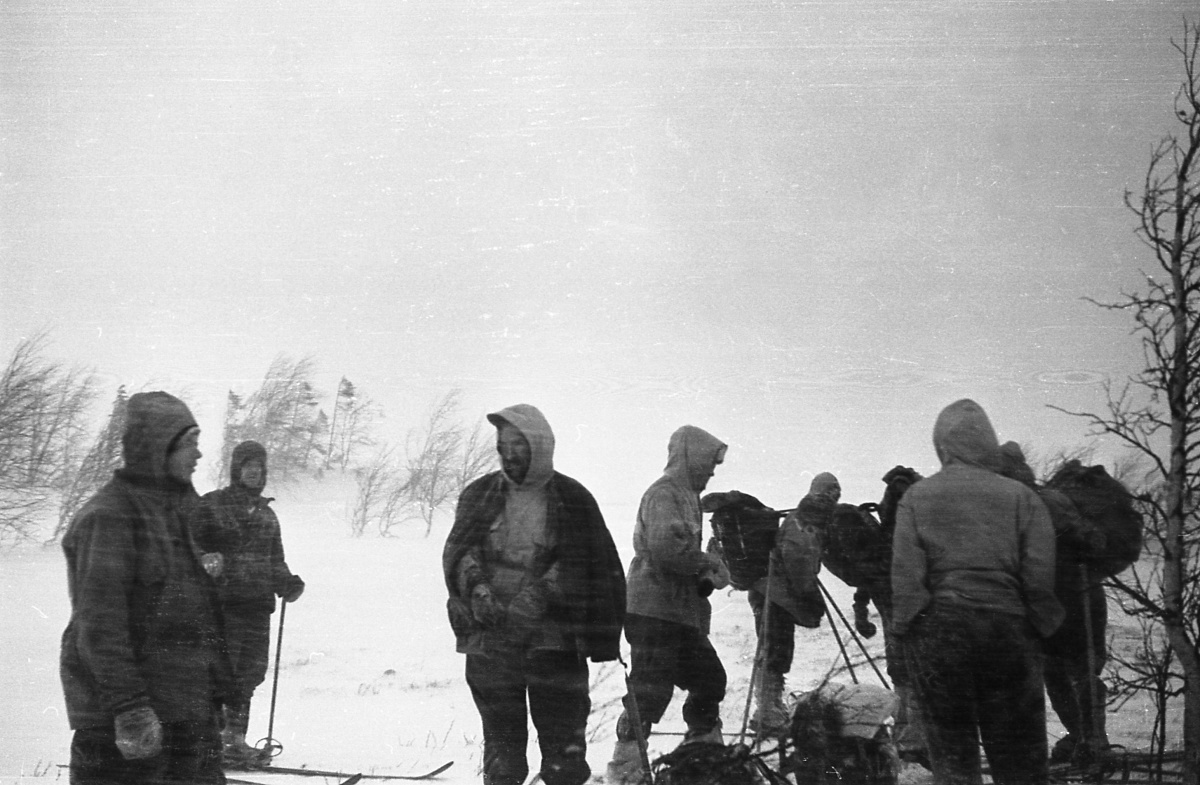
The discussion between Igor Dyatlov and Semyon Zolotaryov on 31 Jan 1959
Before joining Dyatlov group Zolotaryov enlisted in Sogrin's group for a trek to Subpolar Urals that would have lasted 25 days. Zolotaryov needed the title Master of Sports which would have reflected his pay and this trek could have given him the qualification. Sogrin describes him as a very open, outgoing, polite, with good communication skills which is expected for a guide. Semyon explained to Sogrin that he found a shorter trek (15 days) and that Igor Dyatlov accepted him n the group. Semyon apologized for the situation and explained that he has family reason - he wanted to take his mom to Caucasus before the begging of the hiking season when he will be busy.
Zolotaryov made Lyuda uneasy: she suspected that he felt used to being in charge, and wondered if that might be a problem. The fact that the group now included one leader aged 23 and one aged 37 could cause some tension. On the day of their departure January 23, she wrote in her diary: "At first, no one wanted him in the group because he’s complete stranger, but then we got over it and he’s coming. We couldn’t just refuse to take him."
Everyone knew that the inclusion of this stranger in the group had been orchestrated by the local Communist Party Committee. Fellow student Valentin Bogomolov recalls how eager Zolotaryov was to finish the trek as soon as possible, giving the impression he was in a big hurry to perform some other duty afterwards.
During the trek the students seem to have accepted and bonded to Zolotaryov. He knew new songs which is always impressive, and being form different generation and walk of life, Zolotaryov had knowledge about things that was interesting to the rest of the group. Zolotaryov participated but also kept his distance, he was with them for the trek, but then he knew that he will be off on his way. He didn't try to impose or correct. Not until the circumstances called for survival, and then the group split in two under the cedar tree. Igor Dytalov and Zina Kolmogorova went off in one direction, we don't know if Slobodin was conscious and if he made it to the cedar tree at all. Lyuda, Kolevatov, Thibeaux-Brignolle and Zolotaryov headed further into the ravine where most probably it was Zolotaryov's idea to dig up a den and prepare for overnight in the snow. His mobilization when being attacked and switching into a survival mode is triggered by Zolotaryov's military experience. Lyuda Dubinina who was reserved to accept him in the group now chose to go with him in the face of life threat.
Semyon Zolotaryov documents
Monetary compensation to Zolotaryova
Monetary compensation to the mother of Semyon Zolotaryov dated March 10, 1959. The body of her son will be found in two months, on May 5, 1959.
Semyon Zolotaryov in color

